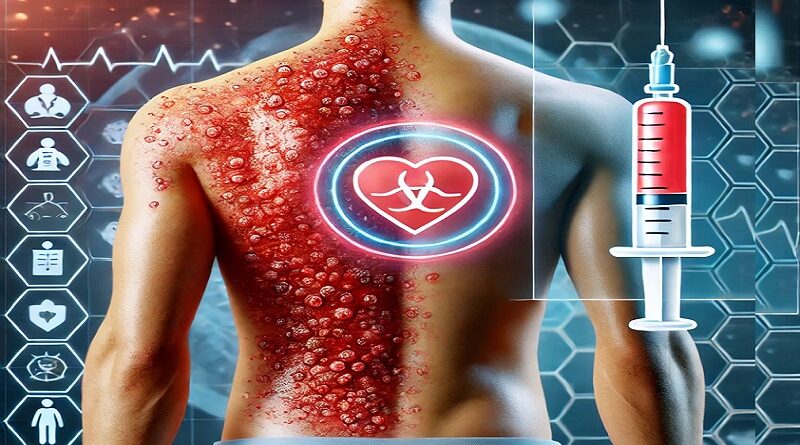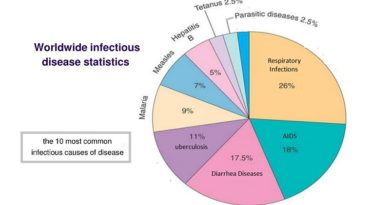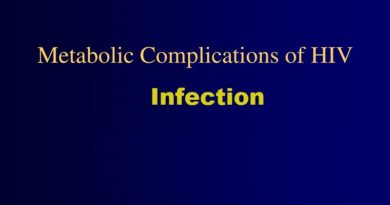Shingles (Herpes Zoster) and the Importance of Vaccination
Shingles, medically known as herpes zoster, is a viral infection that causes a painful rash, often described as burning or tingling. The varicella-zoster virus causes it, and the same virus is responsible for chickenpox. While shingles disease is not life-threatening, its symptoms can be debilitating, particularly for older adults or those with weakened immune systems. Understanding shingles, its risks, symptoms, and the importance of vaccination is crucial for preventing the long-term complications it can cause.
What Is Shingles?
This disease occurs when the varicella-zoster virus becomes reactivated. This reactivation usually occurs years or even decades after the initial chickenpox infection, after being dormant in the nervous system after a person recovers from chickenpox. Certain conditions—such as age, stress, illness, or a weakened immune system, can trigger its resurgence.
It typically manifests as a painful rash that develops on one side of the body or face. The rash usually appears as a stripe of blisters that wraps around the torso but can also occur elsewhere on the body. The pain can be intense and persist for months or even years after the rash clears. This condition is known as postherpetic neuralgia (PHN), one of the most common and severe complications of the disease.
Who Is at Risk?
While anyone who has had chickenpox is at risk of developing herpes zoster, certain factors increase the risk. These include:
- Age:
It is more common in older adults, with the risk significantly after the age of 50. The older a person is, the higher the risk of developing shingles and its complications, particularly PHN. - Weakened Immune System:
Conditions that weaken the immune system, such as cancer, HIV, or certain medications like chemotherapy or steroids, can increase the risk. - Stress and Trauma:
High levels of stress or physical trauma may also play a role in reactivating the virus. - Underlying Health Conditions:
People with certain chronic illnesses, such as diabetes, are at higher risk. - History of Chickenpox:
Only those who have had chickenpox or received its vaccine can develop the condition.
Symptoms of Shingles
The symptoms usually appear in stages. The first signs are often nonspecific, such as:
- Pain, burning, or tingling on one side of the body
- Sensitivity to touch or itching in a localized area
- Flu-like symptoms, including fatigue, fever, or headache (without a rash)
A few days later, a red rash may develop, followed by:
- Fluid-filled blisters, which can burst and form scabs
- Pain and discomfort that can range from mild to severe
The rash and blisters heal within two to four weeks in most people. However, the pain can sometimes last longer, even after the rash disappears.
Complications
One of the most troubling complications is postherpetic neuralgia (PHN), which occurs when the nerve fibers damaged by the virus send exaggerated pain signals from the skin to the brain. This can result in chronic, severe pain that lasts for months or even years. PHN is more common in older adults and can greatly impact a person’s quality of life.
Other potential complications include:
- Vision problems: If the disease affects the eye (ophthalmic shingles), it can cause painful eye infections and even lead to vision loss.
- Neurological issues: In rare cases, it can cause brain inflammation (encephalitis), facial paralysis, or hearing problems.
- Skin infections due to infection of the blisters.
The Shingles Vaccine: Your Best Defense
The best way to prevent herpes zoster and its complications is through vaccination which are highly effective in reducing the risk of developing this disease.
The Two Available Vaccines are:
- Zostavax:
Zostavax was the first shingles vaccine on the market (2006). It is a live, attenuated vaccine administered as a single injection. However, it is no longer the preferred vaccine due to its lower efficacy, particularly in older adults, and has been replaced by a more effective option. - Shingrix:
Approved in 2017, Shingrix is now the preferred vaccine for prevention. It is a non-live, recombinant vaccine, given in two doses, 2 to 6 months apart. Shingrix is over 90% effective, even in older adults. Unlike Zostavax, it can be safely given to people with weakened immune systems.
Who Should Get the Vaccine?
The Centers for Disease Control and Prevention (CDC) recommends the Shingrix vaccine for:
- Adults aged 50 and older
- Adults aged 19 and older with weakened immune systems or other risk factors
Even if you’ve already had shingles, the CDC recommends vaccination to prevent future episodes, as it’s possible to get shingles more than once. Additionally, those who received Zostavax are advised to get the Shingrix vaccine for better protection.
How Effective Is the Shingrix Vaccine?
It is remarkably effective in preventing both shingles and its complications. Clinical trials have shown that the vaccine is:
- 97% effective in adults aged 50 to 69
- 91% effective in adults aged 70 and older
- 85% effective in preventing postherpetic neuralgia (PHN)
These high efficacy rates make Shingrix a powerful tool in reducing the burden of shingles, particularly among older adults who are most at risk for complications.
Side Effects of the Vaccine
Like all vaccines, this vaccine can cause side effects, though they are generally mild and short-lived. The most common side effects include:
- Pain, redness, or swelling at the injection site
- Fatigue
- Muscle pain
- Headache
- Fever or chills
These side effects typically resolve within a few days. Serious side effects are rare, but as with any medical treatment, it’s important to discuss any concerns with your healthcare provider.
Conclusion
Shingles is a painful and potentially debilitating condition, but it is preventable. Vaccination with Shingrix provides strong, long-lasting protection against it and its most severe complication, postherpetic neuralgia. For adults over 50, especially those with weakened immune systems, the vaccine is important in safeguarding their health and quality of life.




